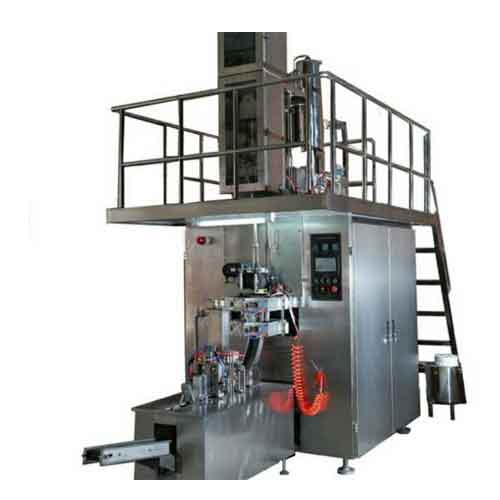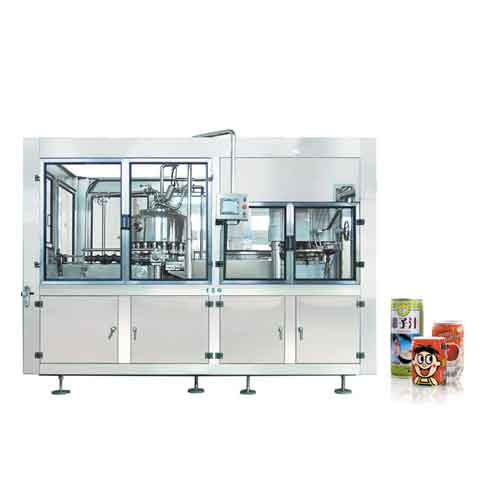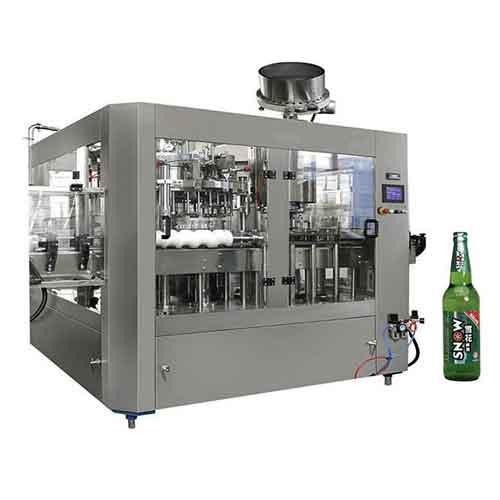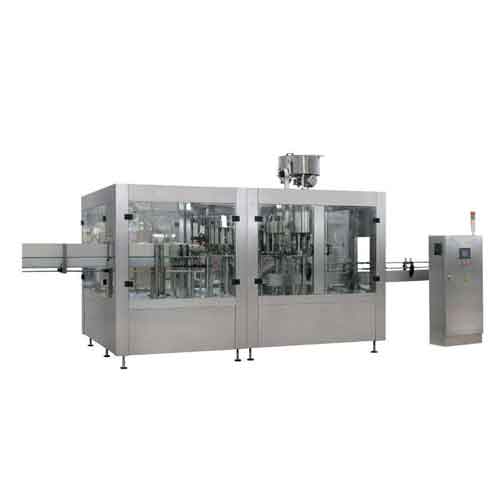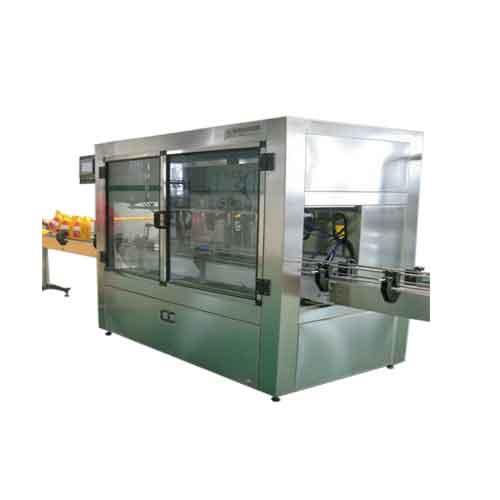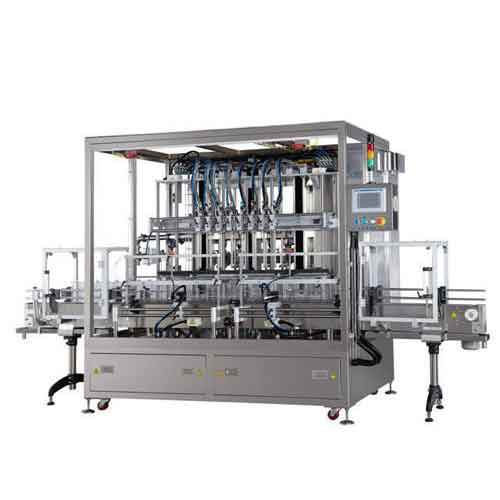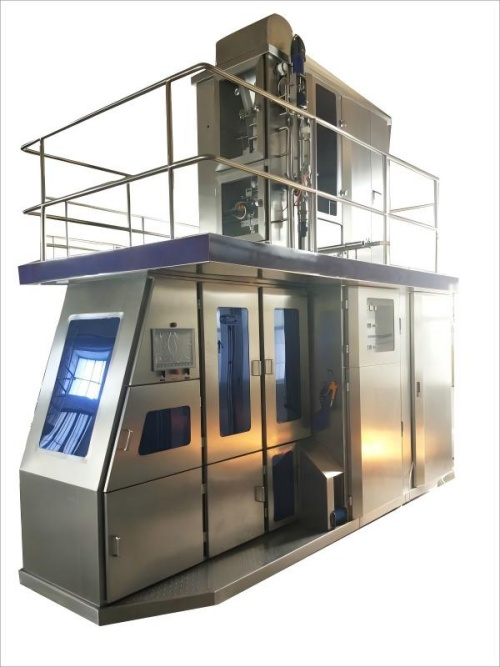
Table of Contents
· Introduction· Why Maintenance Matters for Aseptic Carton Fillers
· Daily Maintenance Routine for Your Aseptic Filler
· Weekly and Monthly Maintenance Tasks
· Quarterly and Annual Maintenance Schedule
· Best Practices for Aseptic Filler Care
· Conclusion
Introduction
Your aseptic carton filling machine is the heart of your beverage production line – but what if it suddenly breaks down? A malfunction can halt production, waste product, and cost you thousands in lost time . As a production manager, I know that feeling of panic when the line goes down because of a preventable issue.Think about the last time a tiny problem – maybe a worn seal or a clogged nozzle – brought your whole operation to a standstill. It’s frustrating and expensive. Aseptic fillers are complex, precision machines, and without proper care, issues like leaks, contamination, or inaccurate fills can pop up and ruin your day . Even minor deviations in an aseptic filler’s performance can cascade into big problems if left unchecked .
The good news is that regular maintenance can keep your aseptic brick carton filler running smoothly and prevent those costly surprises. By following a few simple daily, weekly, and monthly maintenance steps, you can avoid breakdowns, extend the machine’s life, and ensure every carton that comes off the line is perfect. In this guide, I’ll share practical tips and a clear maintenance schedule so you can keep your filler in top shape with minimal effort.
Why Maintenance Matters for Aseptic Carton Fillers
Let’s face it – maintenance can feel like a hassle. You’re busy running production, and it’s tempting to skip that daily checklist or put off a deep cleaning to meet a deadline. But neglecting your aseptic filler comes with serious risks. Without proper care, you might start seeing product leaks, inconsistent fill levels, or even worse – contamination of your sterile product . These issues not only waste product and money, but they can also damage your brand’s reputation if customers receive spoiled or under-filled cartons.Consider the consequences of a major failure. An aseptic filler failure can mean hours or days of downtime while you troubleshoot and repair the machine. That translates to thousands of dollars in lost production each hour . Plus, if the failure leads to a batch of contaminated product, you could face costly recalls or regulatory issues. In short, a little maintenance negligence can snowball into a big crisis.
The key to avoiding these headaches is a proactive maintenance approach. Regular upkeep ensures that your machine’s components are clean, calibrated, and functioning correctly at all times. This not only prevents unexpected breakdowns but also helps maintain the sterility and quality of your product. When you stick to a maintenance schedule, you catch small problems early – before they turn into big ones. In fact, a well-maintained aseptic filler will run more efficiently, with fewer stoppages and better fill accuracy, ultimately saving you money in the long run . Remember: an ounce of prevention is worth a pound of cure. By prioritizing maintenance, you protect your production, your product quality, and your peace of mind.
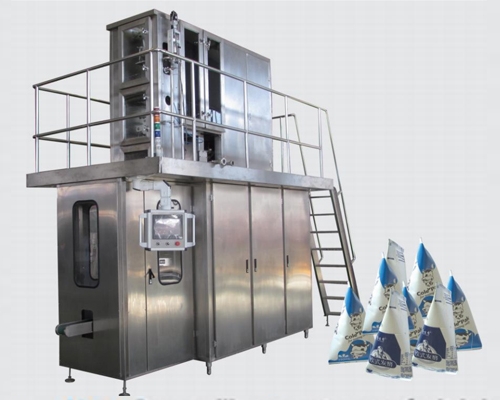
Daily Maintenance Routine for Your Aseptic Filler
You come in first thing in the morning, ready to start production, only to find your aseptic filler acting up. Maybe the fill levels are off, or there’s a strange noise from the conveyor. These surprises often stem from issues that could have been caught with a quick daily check. Skipping daily maintenance means small problems (like a bit of product residue or a loose belt) can go unnoticed and worsen overnight.A typical day without a proper morning routine might involve a delayed start while you troubleshoot a clog or leak. Each minute of delay eats into your production schedule. Moreover, running the machine with undetected minor issues can cause more wear and tear – for example, a tiny spill left uncleaned could corrode a part or attract bacteria, leading to bigger issues later.
Starting each day with a brief maintenance routine will keep your filler in peak condition and catch problems early. Here’s a simple daily checklist you can follow:
· Inspect and Clean the Machine: Before starting up, do a visual inspection of the filler. Look for any spilled product, drips, or residue on the machine surfaces. Wipe down the exterior and any accessible parts with a clean, damp cloth. Pay special attention to the filling area and sealing jaws – removing any dried product or debris here will prevent it from interfering with the filling or sealing process. (Remember to use cleaning agents approved for food contact and rinse well if needed.)
· Check for Leaks or Drips: Inspect the product supply lines, valves, and filler nozzles for any leaks. A small drip might seem harmless, but in an aseptic machine it could indicate a worn seal or a clog that needs fixing. Also, check the sterilant system (like the H₂O₂ tank and lines) for leaks – ensuring no hydrogen peroxide is dripping, which could damage the machine or compromise sterility.
· Listen and Watch for Unusual Noises or Vibrations: When you start the machine, stand by and listen. The filler should run smoothly with consistent sounds. Grinding, rattling, or unusual vibrations could mean a bearing is failing or a part is loose. If you hear anything odd, stop the machine and investigate before continuing production. It’s better to resolve a minor noise now than risk a breakdown later.
· Verify Critical Functions: Do a short test run of the machine with empty cartons or water to verify that all functions are working as expected. Check that the carton feeder is picking up cartons correctly, the sterilization spray and UV lamps are activating, and the filling and sealing cycles complete without errors. Ensure the machine’s sensors are detecting cartons properly (no “carton missing” alarms for no reason) and that the conveyor is moving smoothly. If any error messages or alarms appear on the control panel, address them immediately – don’t ignore them and hope they go away.
· Lubricate Moving Parts (if required daily): Some machines have certain parts that need a light lubrication each day. Refer to your machine’s manual to see if any points (like a specific chain or hinge) require daily lubrication with food-grade lubricant. If so, apply the recommended lubricant in the specified amounts – too much can attract dirt, too little won’t protect the parts. Daily lubrication will keep those parts moving freely and reduce friction.
· Document and Communicate: At the end of your shift or during a downtime, take a few minutes to record any observations or minor issues you noticed. Did you tighten a screw? Did you see a seal that looked worn? Keeping a log helps track recurring problems and lets the next shift know if something needs extra attention. Good communication among operators and maintenance staff is part of daily care – it ensures everyone is aware of the machine’s condition.
By following these daily steps, you’ll start each production day with confidence that your aseptic filler is clean, leak-free, and functioning properly. This daily routine only takes a few minutes but can save you hours of downtime later. As an added benefit, your machine will perform more consistently throughout the day, giving you accurate fills and tight seals on every carton.
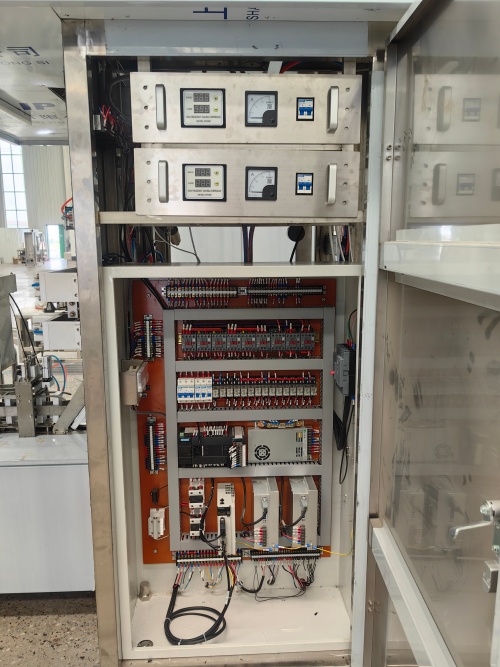
Weekly and Monthly Maintenance Tasks
Daily cleaning and checks are great for the surface, but over time, residue and wear can accumulate in areas you don’t see every day. If you never do a deeper clean or inspection, you might find that by the end of the month your machine isn’t running as smoothly. Perhaps the fill accuracy has drifted, or you start getting more frequent jams. These are signs that a more thorough maintenance is needed – something beyond the quick daily wipe-down.Think of your aseptic filler like a car. You check the oil and tires daily, but you still need an oil change and a tune-up every few thousand miles. Without those, the engine would eventually seize up or run inefficiently. Similarly, an aseptic carton filler needs periodic deeper maintenance. If you skip it, you could end up with clogged sterilant nozzles (leading to poor sterilization), worn belts (causing misalignment of cartons), or buildup in the filling valves (leading to inconsistent fills). Over months, these small issues compound and can lead to a major failure or a drop in product quality.
Setting aside time each week and each month for more detailed maintenance will keep your filler in excellent condition. Here’s what I recommend for weekly and monthly tasks:
· Weekly Deep Cleaning: At least once a week, perform a thorough cleaning of the machine, including areas that see less frequent attention. This is often done during your regular CIP (Clean-in-Place) cycle if your machine has one, or as a manual deep clean. Make sure to clean the product contact parts – for example, disassemble the filling nozzles and valves according to the manual and clean out any product residue or scale. Clean the inside of the aseptic chamber (if accessible) to remove any dust or debris that might have settled. Also, wipe down the UV sterilization lamps and sensors – a buildup of dust on a UV lamp can reduce its effectiveness in sterilizing the cartons. Don’t forget the conveyor belts and guides; product splashes or glue can accumulate there and cause cartons to misfeed. After cleaning, rinse and sanitize everything properly so that no cleaning agents remain.
· Inspection of Wearable Parts: Weekly, inspect parts that tend to wear out or get dirty. This includes belts, chains, and seals. Check the condition of the conveyor belts – are there any cracks or signs of fraying? Are the drive chains tight and lubricated (if lubrication is needed, do it as per the manual)? Inspect all seals and gaskets (especially on the filler valves and sterilant system) for any cracks, wear, or deformation. A worn seal is a common source of leaks, so replacing it proactively can prevent bigger issues . Also, check the condition of the sealing jaws or heating elements that seal the cartons – if they have any residue buildup or scoring, clean or dress them to ensure a good seal every time.
· Calibration and Adjustment: Once a week, verify that the machine is calibrated correctly. Check the fill volume by weighing a few filled cartons – they should be within the specified tolerance. If you find any deviation, adjust the filler settings or calibrate the flow meters as your manual instructs. Also, check the carton sealing quality: are the seals tight and uniform? If not, you might need to adjust the sealing temperature or pressure. Take a look at the carton forming section – ensure the folding and gluing are accurate. If cartons are coming out with misaligned seams or poor glue bonds, adjust the guides or glue applicator. Essentially, use this weekly check to fine-tune the machine’s performance so that it continues to produce perfect cartons.
· Monthly Preventive Maintenance: On a monthly basis, plan a more extensive maintenance session. Ideally, this is done during a scheduled production downtime or weekend shutdown. First, do a comprehensive inspection of the entire machine. This includes checking all electrical connections for tightness (vibrations can loosen screws over time), inspecting the pneumatic system for any air leaks (you can use a soap solution on fittings to check for bubbles), and examining the mechanical components for excessive wear. For example, check the gears and bearings – do they show any signs of wear or play? Listen for any unusual noises when the machine is running at full speed, which could indicate a bearing in need of replacement. If your machine has an air compressor for pneumatic parts, service that as well (drain moisture, replace filters).
· Replace Consumable Parts: Monthly is a good interval to replace certain consumables before they fail. For instance, if your machine uses filters (like sterile air filters or H₂O₂ filters), this might be the time to swap them out with new ones to ensure they’re always effective. Check the UV lamps – many UV bulbs have a rated lifespan (e.g., 1000 hours); if you’re approaching that, replace the lamp to maintain proper sterilization. Also, if any belts or seals showed signs of wear during weekly checks, go ahead and replace them now. It’s better to replace a part proactively than to have it break during production. Keep a stock of critical spare parts (such as belts, seals, fuses, etc.) so that you can do these replacements promptly .
· Lubrication (Monthly): Some components only need lubrication on a monthly schedule. Refer to your machine’s lubrication chart – typically, things like gearboxes, certain bearings, or cam mechanisms might require a monthly grease or oil top-up. Use only the lubricants specified by the manufacturer (often food-grade H1 lubricants) and apply the recommended amount. Proper lubrication reduces friction and heat, which in turn reduces wear on those parts and helps prevent unexpected failures.
· Functional Tests and Software Checks: Once a month, perform functional tests of the safety and control systems. For example, test the emergency stop – does the machine come to an immediate halt when the E-stop is pressed? Test any interlocks (like door sensors on the aseptic chamber) to ensure the machine won’t run if a safety cover is open. Check the calibration of sensors – for instance, the level sensor in the product tank or the photoelectric sensors that detect cartons. If your filler has a PLC or computer control, review the error logs from the past month to see if there were any recurring minor faults. It’s also a good idea to back up the machine’s settings or software configuration monthly, so that if something goes wrong, you can restore it easily.
By sticking to these weekly and monthly maintenance tasks, you’ll ensure that your aseptic carton filler remains in top operational condition. The weekly deep clean and checks prevent gradual buildup and catch developing issues early, while the monthly maintenance ensures that all the machine’s critical components are serviced and replaced as needed. This proactive approach will pay off with fewer interruptions in production and a machine that consistently delivers high-quality, properly filled cartons.
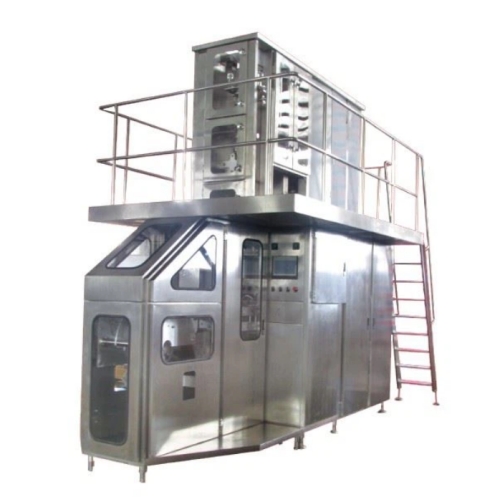
Quarterly and Annual Maintenance Schedule
Even with diligent daily and monthly care, some wear and tear is inevitable over the long term. If you never do a more comprehensive service, you might find that after a year or two, your machine’s performance has degraded – maybe it’s running slower, or you’re getting more frequent errors. Major components can wear out or drift out of calibration over time. Without a deeper service at longer intervals, you risk unexpected failures of parts that should have been replaced during scheduled maintenance.Consider that an aseptic filler is a high-precision, automated system with many moving parts. Over several months, things like motor belts can stretch, gears can wear down, and alignment can shift slightly. Seals that were fine monthly might start leaking after a year due to material fatigue. Electrical components can accumulate dust or develop loose connections. If you ignore these for too long, you could face a serious breakdown – for example, a gearbox failure or a major seal leak that contaminates the system. Such failures not only stop production but can be expensive to repair, involving replacement of costly parts and possibly professional technician downtime.
To keep your machine running optimally for years, you should schedule more thorough maintenance on a quarterly and annual basis. These intervals allow you to tackle tasks that are too time-consuming or not necessary to do every month, but are crucial for long-term reliability. Here’s a guideline for quarterly and annual maintenance:
· Quarterly Maintenance (Every 3 Months): Every quarter, plan a maintenance session that goes even deeper. This might coincide with a scheduled production shutdown or a slower period. First, perform a detailed inspection of all major mechanical components. Check the alignment of the machine – for instance, verify that the carton transport chain is aligned properly and that the filling heads are correctly positioned over the cartons. Use gauges or alignment tools if provided by the manufacturer. Inspect all belts and replace any that show significant wear or cracking (don’t wait for them to snap). Check the tension of belts and adjust as needed. Examine the gears and sprockets; if there’s excessive tooth wear or backlash, note it for potential replacement. Grease or oil any components that the manual designates for quarterly lubrication (some heavy-duty bearings or gearboxes might only need servicing every few months).
· Deep Clean and Sanitize (Quarterly): In addition to your regular weekly cleanings, do an extra thorough cleaning every quarter. This could involve more extensive disassembly of the machine. For example, you might remove and clean the entire product path – all pipes, valves, and the filling cylinder – to remove any mineral deposits or biofilm that might have formed. If your machine has an aseptic chamber with HEPA filters, check or replace those filters quarterly to ensure the sterile air supply is clean. Sanitize the entire interior of the chamber and any product contact surfaces with the recommended sterilant (often hot water, steam, or chemical sterilant) to kill any lingering bacteria. Essentially, treat this quarterly clean as a chance to get into every nook and cranny that daily operations might miss.
· Calibration of Instruments (Quarterly): Many aseptic fillers have instruments like flow meters, pressure sensors, and temperature probes that control the filling and sterilization processes. It’s wise to calibrate these instruments every quarter to ensure they are reading accurately. For instance, use a calibrated scale to verify the fill volume accuracy of each filling head – adjust the filler settings if any head is off. Check the temperature sensors on the UHT sterilizer or the sterilant heater – if they’re off by more than the allowed tolerance, recalibrate or replace them. Calibration ensures that the machine is doing what the control panel says it’s doing, which is critical for both product quality and safety.
· Electrical and Control System Check (Quarterly): Every three months, have a qualified technician inspect the electrical components. Tighten all electrical connections and terminal screws (vibration can loosen them over time). Check the condition of cables and wiring harnesses – look for any fraying or signs of heat damage. Test the overload protection devices and circuit breakers to ensure they function correctly. If your machine has a touchscreen HMI or PLC, check that all buttons and indicators work and that the screen is clear. A quarterly electrical check helps prevent issues like short circuits or control malfunctions that could cause the machine to shut down unexpectedly.
· Annual Maintenance: Once a year, plan for a major maintenance overhaul of the aseptic filler. This is often best done in coordination with the machine manufacturer or a certified service engineer, especially if you’re not experienced in major repairs. An annual service typically includes disassembling major parts of the machine to inspect and service them. For example, the filling valve assemblies might be completely overhauled – old seals replaced, springs checked, and valves lapped or replaced if needed. The mechanical drive system (gearbox, motors, cams) might be inspected; gears could be measured for wear and bearings might be replaced as a preventive measure. If your machine has a hydraulic system (some older or larger models do), the annual service is a good time to change the hydraulic oil and filter.
· Replace Major Wear Parts Annually: There are usually a few parts that the manufacturer recommends replacing once a year regardless of apparent condition. This might include certain O-rings, gaskets, or seals that are critical for aseptic integrity. It might also include belts that have a specified lifespan, or the UV lamps if they haven’t been replaced more frequently. By replacing these parts annually, you ensure that you’re not operating with components that are past their prime. For example, a seal that’s a year old might still look okay, but its elasticity could be reduced – replacing it proactively avoids a potential leak that could compromise a whole production batch.
· Performance Test and Validation: After the annual maintenance, it’s important to validate that the machine is performing at its best. Run a production test with the machine and do quality checks on the output. Measure fill weights, check seal integrity (perhaps by doing a seal strength test or a leak test on filled cartons), and verify that the machine can reach its rated speed without issues. If any parameters are out of spec, troubleshoot and adjust until everything is functioning correctly. This is also a good time to do a media fill or sterility test (if applicable) to ensure the aseptic process is still effective after the maintenance work.
· Professional Inspection: Ideally, have a technician from the equipment manufacturer or an authorized service provider inspect the machine annually. They can bring specialized knowledge and tools to check things you might not be able to. They might perform alignment checks with precision instruments or use diagnostic software to check the machine’s control system health. A professional annual inspection can catch subtle issues and give you peace of mind that your machine is in compliance with all safety and performance standards.
By following this quarterly and annual maintenance schedule, you’ll be addressing the long-term wear and tear that daily care can’t prevent. Quarterly tasks keep the machine finely tuned and clean on a deeper level, while the annual service ensures that major components are in good shape and any potential problems are headed off before they cause a failure. This kind of comprehensive maintenance is an investment – but it pays off by extending the life of your aseptic carton filler and keeping it operating at peak efficiency year after year.
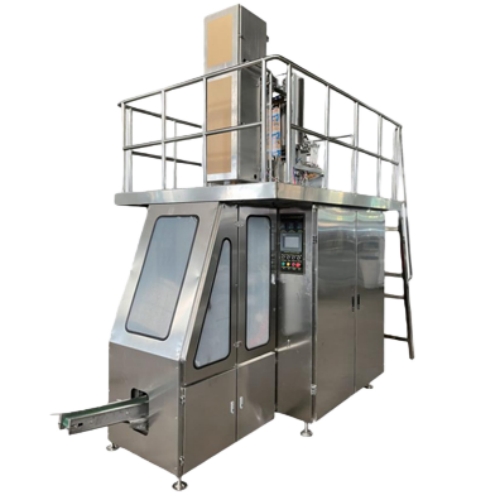
Best Practices for Aseptic Filler Care
Even with a maintenance schedule, it can be easy to fall into bad habits or overlook some aspects of care. Maybe you’re tempted to skip a cleaning because you’re in a rush, or you’re not sure how to properly store spare parts. Without a clear set of best practices, you might not be getting the maximum benefit from your maintenance efforts. In fact, small oversights can undermine the effectiveness of your routine – for example, using the wrong cleaning chemical could damage the machine, or not training your staff properly could lead to mistakes.Consider this: if you’re not following best practices, you might be doing maintenance “by the book” but still experiencing issues. For instance, if you’re not using the correct lubricant, your machine’s parts might still wear out faster. Or if your team isn’t consistent with cleaning procedures, one shift might leave behind residue that causes a problem for the next shift. These kinds of gaps can lead to unexpected failures or quality issues despite your best intentions. Essentially, without proper practices, maintenance becomes less effective and you might end up with the same problems recurring.
To truly maximize the life and performance of your aseptic carton filler, adopt these best practices in your maintenance regimen:
· Follow Manufacturer Guidelines: Your machine’s manufacturer knows it best. Always refer to the official operation and maintenance manual for procedures, schedules, and specifications. Use only the recommended cleaning agents, lubricants, and replacement parts. The manual will tell you things like the correct pressure for cleaning, the type of filter to use, or how often to calibrate a sensor. Deviating from these can cause issues – for example, using a non-approved chemical might corrode a seal, or using the wrong grade of oil might not protect a gear properly. By sticking to the manufacturer’s guidelines, you ensure that you’re doing maintenance in a way that the machine was designed to handle.
· Train and Empower Your Operators: Maintenance isn’t just the job of the maintenance crew – the operators who run the machine daily are your first line of defense. Make sure all operators are well-trained in basic maintenance tasks and in recognizing early warning signs. They should know how to do the daily cleaning and checks, how to respond to an alarm, and when to call for help. Regular training sessions can refresh their knowledge. When operators understand the machine’s workings and care requirements, they are more likely to catch small issues and treat the equipment with care. Encourage a culture where operators take pride in keeping the machine clean and report any abnormalities immediately. This kind of ownership can significantly reduce preventable errors and downtime.
· Keep a Detailed Maintenance Log: Document everything – daily inspections, weekly cleanings, parts replaced, calibrations done, etc. A maintenance log (digital or paper) helps track the history of the machine. You can see at a glance when a part was last replaced or when the last calibration was done, which helps in planning future maintenance. It also helps identify patterns: if you notice that a particular seal fails every 3 months, you might decide to replace it proactively every 2 months or investigate why it’s failing. Moreover, detailed logs are invaluable if you ever have an audit or need to demonstrate to regulators that you are properly maintaining your equipment. Make it a habit to fill out the log each time you perform maintenance or encounter an issue.
· Use High-Quality Spare Parts: It might be tempting to use cheaper, generic parts to save money, but in an aseptic filler, using subpar parts can lead to trouble. Stick with genuine or manufacturer-approved spare parts for critical components. For example, use the exact filter type specified for the sterile air system – a cheaper filter might not have the correct pore size and could let contaminants through. Use original belts and seals, as they are designed to withstand the machine’s conditions. High-quality parts might cost a bit more upfront, but they fit better and last longer, reducing the chance of unexpected failures. Keep an inventory of essential spare parts on hand (seals, belts, lamps, fuses, etc.) so that you can replace them immediately when needed . This way, you won’t have to halt production waiting for a part to arrive.
· Implement a Preventive Maintenance Program: Beyond just reacting to issues, aim to prevent them through scheduled maintenance. This means not only following the daily/weekly/monthly tasks we discussed, but also using tools like checklists and maintenance management software if available. A checklist ensures that no step is forgotten during routine maintenance. A maintenance management system can send you reminders when it’s time to do the next service or when a part is due for replacement. By being proactive, you address wear and tear before it causes a failure. For instance, replacing a timing belt as per schedule, rather than waiting for it to break, can save you from a potentially catastrophic failure. Preventive maintenance might seem like extra work, but it’s far more efficient than reactive repairs .
· Maintain a Clean and Organized Environment: The area around your aseptic filler also matters. Keep the machine and its surroundings clean – spilled product or packaging debris on the floor can attract pests or cause slips, and dust in the air can settle on the machine. A clean environment helps in maintenance; you’re less likely to introduce contaminants when working on the machine, and you can spot leaks or issues more easily. Also, organize your tools and spare parts. Have a designated place for everything so that when you need to do a quick fix, you’re not wasting time searching for a wrench or a replacement seal. An organized setup reduces stress and time during maintenance tasks.
· Monitor Performance Metrics: Track key performance indicators of your filler such as fill accuracy, machine uptime, and the number of rejected cartons. If you see a trend of increasing rejects or decreasing uptime, it might be a sign that maintenance needs to be ramped up or that a component is wearing out. For example, if your fill accuracy standard deviation starts creeping up, that could indicate nozzle wear or calibration drift – a signal to service the filling system. By monitoring these metrics, you can catch issues in a more data-driven way, rather than waiting for a breakdown. Many modern fillers have data logging or can be connected to a production management system; use that data to your advantage for predictive maintenance.
· Regularly Review and Improve Your Maintenance Plan: The maintenance needs of your machine might change over time or with different products. Maybe you introduce a new product that’s more viscous and puts different strain on the machine, or maybe you increase your production speed. Periodically review your maintenance schedule and practices to ensure they still fit. Perhaps you find that monthly cleaning is sufficient for one product but with another product you need to clean more often to prevent buildup. Be willing to adjust your routines. Also, solicit feedback from your maintenance team and operators – they might have suggestions for improvements or notice something that could be done more efficiently. Continuous improvement in your maintenance process will lead to better machine reliability.
By incorporating these best practices, you create a robust framework for caring for your aseptic carton filler. Following the manufacturer’s guidance and keeping detailed records ensures you don’t miss anything important. Training your team and fostering a proactive attitude turns everyone into a guardian of the machine’s health. Using quality parts and a preventive approach means you stay ahead of problems. Ultimately, these practices will help you get the most out of your equipment – maximizing uptime, reducing costs, and ensuring that your aseptic filler serves you well for years to come.
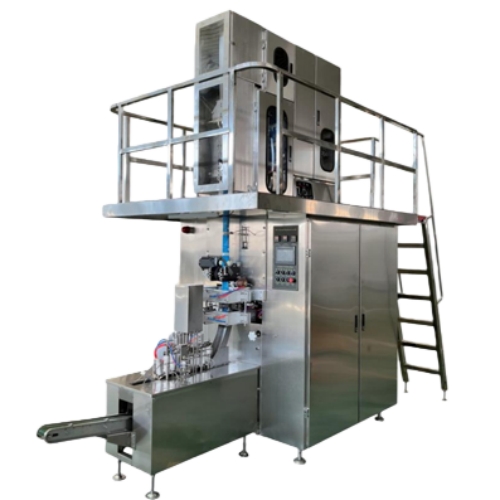
Conclusion
Maintaining a standard brick aseptic carton filler doesn’t have to be overwhelming. By breaking it down into simple daily, weekly, monthly, and annual tasks, you can keep your machine in excellent condition with minimal fuss. Remember the key is consistency – a little care each day goes a long way toward preventing big problems. I’ve seen firsthand how a well-maintained filler can run for years with only minor tweaks, while a neglected one can cause constant headaches. The time and effort you invest in maintenance will pay off in reliable production, fewer product losses, and a longer lifespan for your equipment.So, make it a habit to do those daily checks, schedule regular cleanings and inspections, and don’t ignore the small warning signs. By following the advice in this guide, you’ll be able to confidently say that your aseptic carton filler is always ready to perform when you need it. Here’s to smooth operations and perfectly filled cartons every time!
Union Machinery has been engaged in food machinery customization services since its establishment in 2014, according to customer needs for you to tailor suitable machinery and equipment, for more product information, please refer to: Aseptic-Carton-filling-machine;More video information see view:200ml-aseptic-carton-filling-machine ; Our expertise and advantages will bring you more opportunities and development space.
For personalized, industry-tailored advice and to explore state-of-the-art solutions, please don't hesitate to contact us at info@unmachinery.com
The following is other knowledge related to aseptic carton filling production that I have summarized based on long-term work experience, for your reference. I hope it will be helpful to you.
1.What is the aseptic filling machine?
2.How to ensure the quality and safety of aseptic carton filling products?
3.What are the common forms of aseptic carton packaging?
4.What are the main equipment of aseptic carton filling line?
5.Aseptic carton filling common problems and solutions.
6.How to ensure the aseptic effect of aseptic carton filling?
7.What should be noted when buying a aseptic carton filling machine?
8.What are the benefits of using a sterile carton filling machine?
9.How can aseptic carton filling machines help enterprises improve production efficiency?
10.What is the maintenance cost of a aseptic carton filling machine?
11.How to judge the quality of aseptic carton filling machine?
12.How Can Aseptic Filling Revolutionize Your Ice Cream Production?
13.What Are the Benefits of Aseptic Juice Filling?

